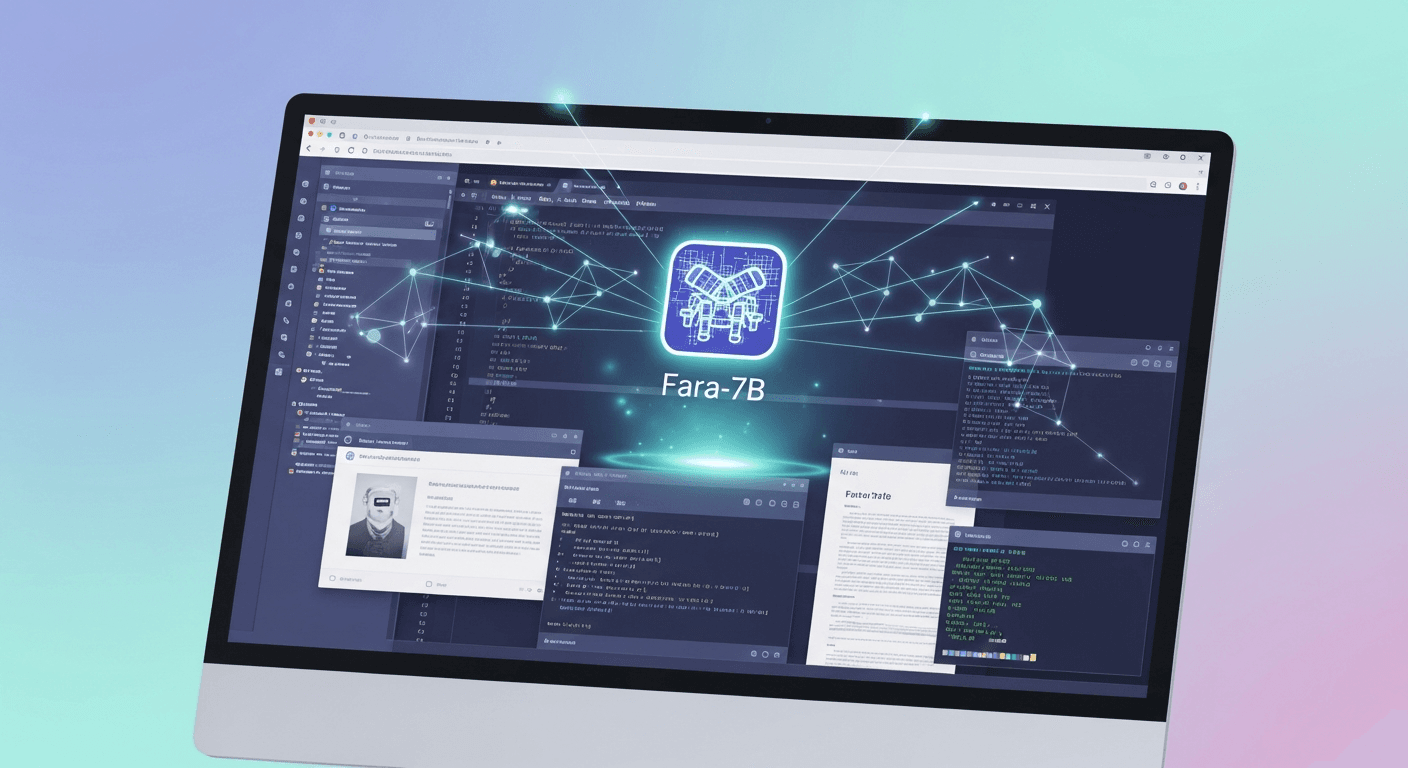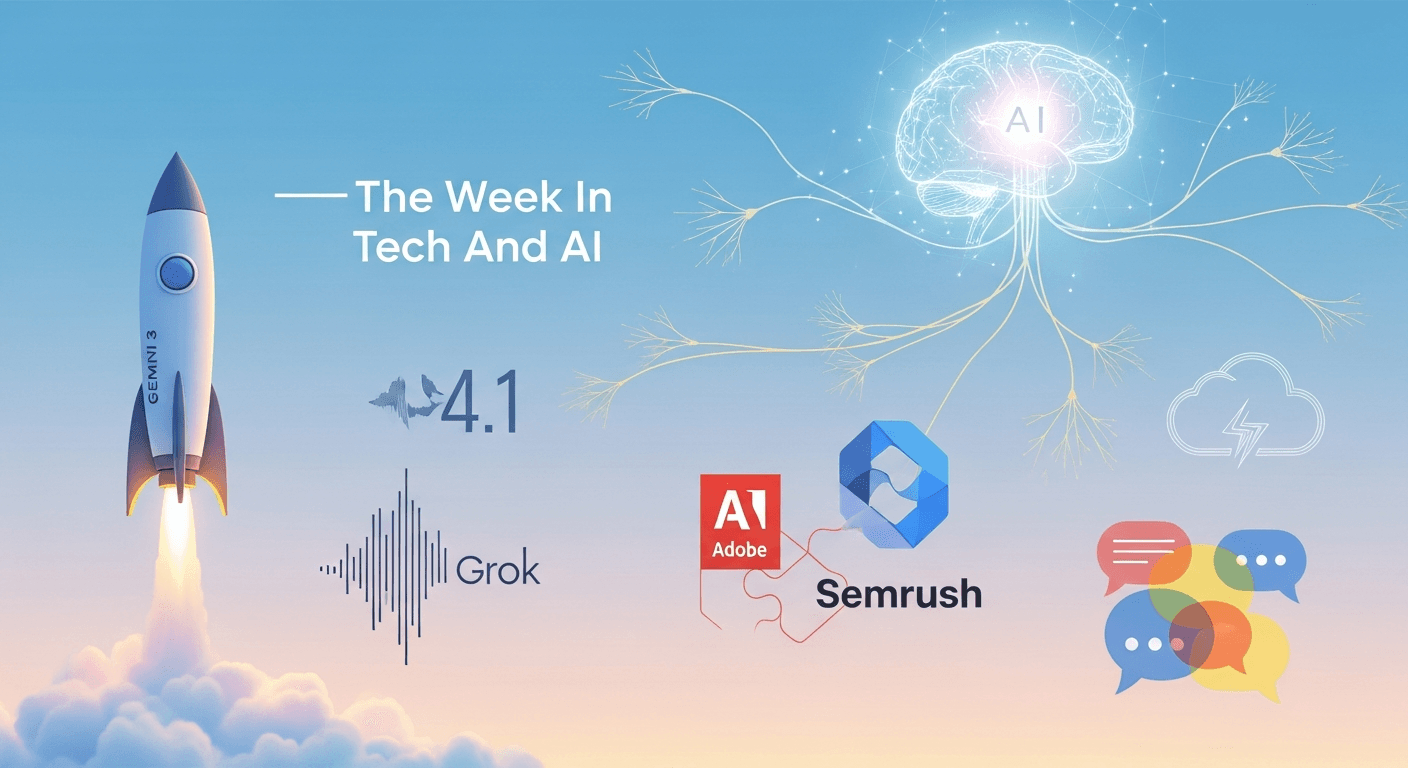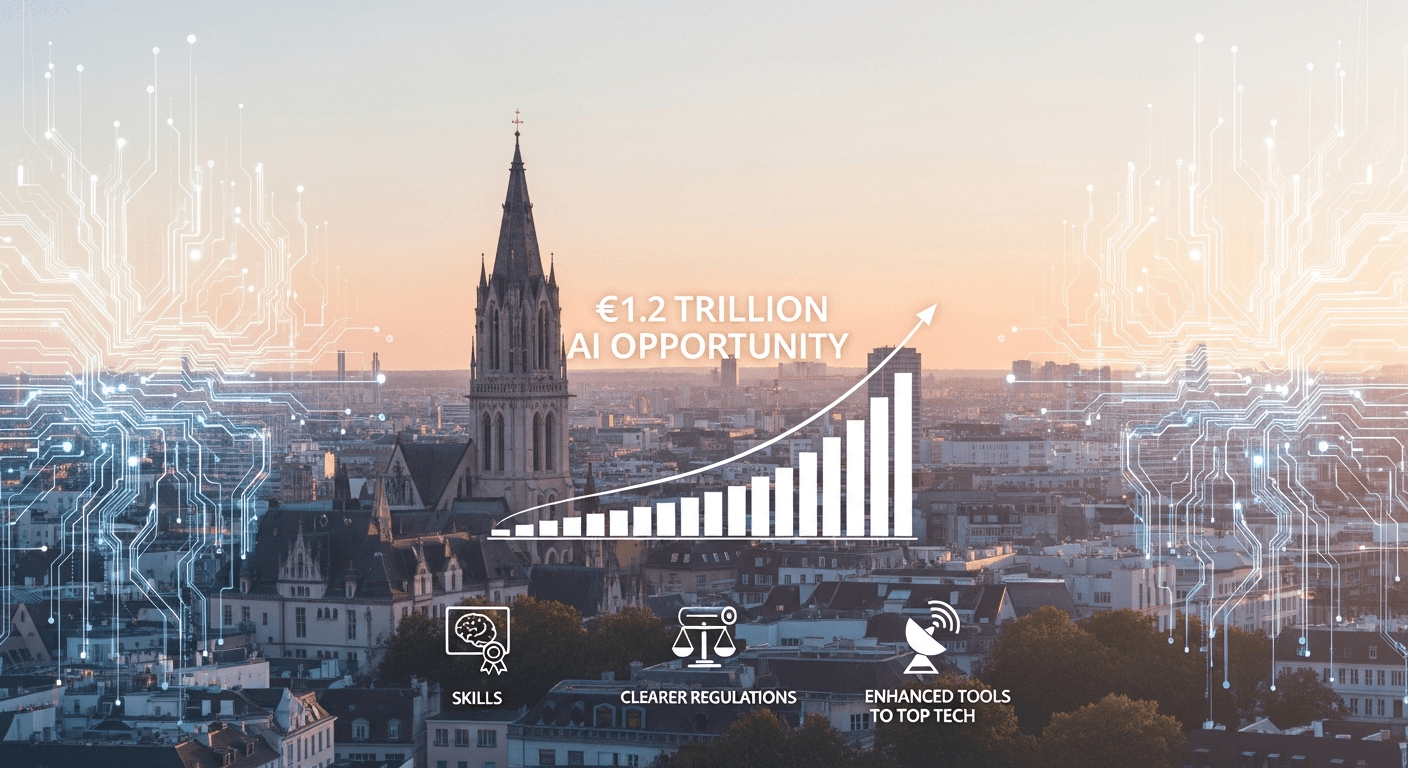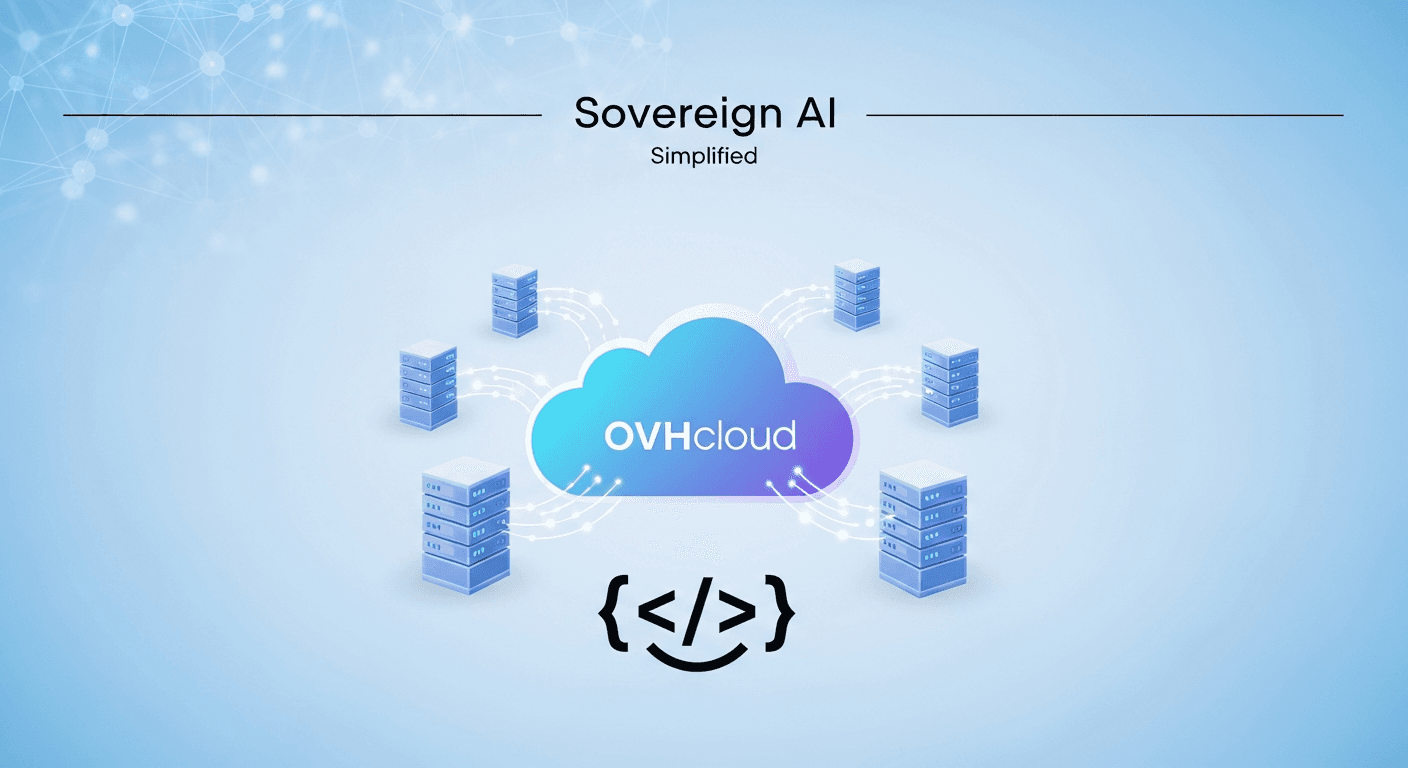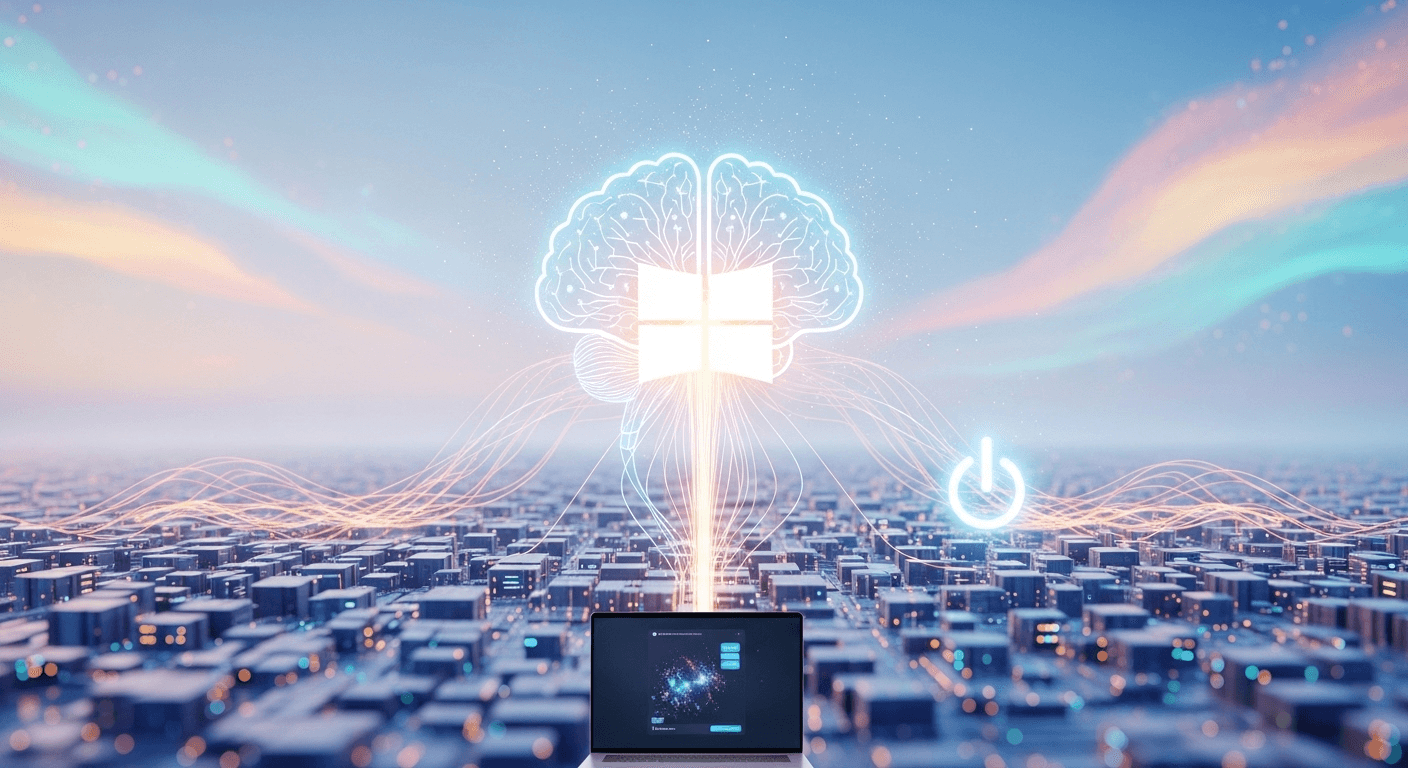
How OpenAI Aims to Be the Windows of AI
Introduction
In recent weeks, OpenAI has made a series of announcements that, while exciting, reveal a clear and bold ambition: to position itself as the dominant platform in AI, much like Windows was in the PC era. This strategy aims to create an environment where users engage with applications and developers can easily bring their innovations to life. Recent highlights, including new apps in ChatGPT, partnerships with tech giants Nvidia and AMD, and compelling infrastructure ventures, all point toward OpenAI’s aspiration to control the vital intersection of AI hardware and software.
Let’s explore this strategy more closely, understand how it mirrors the evolution of personal computing, and consider what it means for developers, businesses, and competitors.
What Just Happened: A Quick Overview
-
Apps Inside ChatGPT: OpenAI rolled out apps that function directly within ChatGPT, accompanied by an Apps SDK and plans for an app directory with monetization features. The initial offerings include familiar services like Spotify, Canva, and Zillow, allowing users to integrate these apps seamlessly into their ChatGPT conversations.
-
Sora 2 and the Sora App: The landscape of video generation is evolving from theory to practical application. Sora 2 is now accessible via API and gaining traction as a consumer app in the marketplace.
-
Partnership with Nvidia: OpenAI and Nvidia have entered an agreement outlining the deployment of at least 10 gigawatts of Nvidia systems, with Nvidia planning a staggering investment of up to $100 billion in OpenAI starting in 2026.
-
Collaboration with AMD: A separate agreement with AMD involves a six-gigawatt, multi-year deal launching with the MI450 in 2026, along with an option allowing OpenAI to purchase up to 160 million shares of AMD stock at $0.01 as configurations are met.
-
Memory and Infrastructure in Korea: OpenAI’s Stargate initiative now includes partnerships with Samsung and SK hynix to advance memory technologies and explore new data centers in Korea.
-
Oracle’s Expanding Capacity: Oracle reports significant performance obligations, are linked to a $30 billion annual agreement with OpenAI, alongside plans for multi-gigawatt capacity in the U.S.
-
Usage Momentum: OpenAI has highlighted that it garnered 800 million weekly users of ChatGPT during its DevDay 2025 event, showcasing the substantial audience developers can reach.
Why This Strategy Resembles the Windows Era
When a platform captures the majority of user attention, it becomes the starting point for users and a critical destination for developers. In the late 20th century, Microsoft Windows established that kind of dominance in the PC ecosystem by attracting user engagement, which, in turn, drew in applications that further solidified its market position.
Here’s how OpenAI’s strategy reflects this model:
– Lead with a Mass-Market Product: ChatGPT serves as the everyday entry point for millions of users, effectively removing the chicken-and-egg challenge for developers interested in reaching a large audience.
– Integrate Apps into the Platform: By allowing users to utilize applications directly within ChatGPT — such as accessing Spotify playlists or creating designs with Canva — OpenAI is shifting the focus from traditional web browsers and standalone applications, changing the power dynamics of distribution.
– Offer Developers Monetization Opportunities: The introduction of the Apps SDK and the upcoming app directory suggest an ecosystem where developers can create applications that reach a vast audience and benefit from in-platform monetization.
If this sounds familiar, it should. Popular products lead to robust platforms, and a gravitational pull for developers follows — that’s the Windows narrative in a nutshell. This time, however, the interface revolves around natural language and intelligent agents as opposed to classic windows and menus.
Transitioning from iPhone Models to PC Dynamics
For years, our reference point for platforms has been smartphones, yet the economics of an AI-centric platform are more akin to the PC era rather than the fully integrated iPhone model.
- AI Requires Substantial Computation: Unlike mobile constraints like battery life and screen size, AI’s challenges lie in computation — specifically, access to GPUs, networking capabilities, memory, and power. Thus, the discussion around gigawatts of power and chip roadmaps has gained prominence alongside feature discussions.
- Horizontal Solutions Surpass Vertical: Apple’s tightly integrated model flourished in mobile environments but cannot cater to all price ranges or use situations. Windows succeeded due to its expansive hardware ecosystem. OpenAI seems to aim for a similar approach in AI by establishing a horizontal platform that interfaces with various suppliers, allowing developers greater flexibility.
Controlling the Platform to Influence the Underlying Stack
A Windows-like platform does more than attract applications; it also exerts influence over its suppliers. Two key partnerships illuminate this:
– Nvidia: The Scale Engine: OpenAI’s agreement with Nvidia outlines a path to deploy 10 gigawatts of Nvidia systems, with Nvidia set to invest heavily in OpenAI as this capacity materializes. This positions OpenAI alongside a leading provider of AI accelerators on an unprecedented scale.
– AMD: A Second Source with Unique Equity Benefits: OpenAI’s arrangement with AMD establishes a commitment to install six gigawatts of AMD GPUs across generations beginning with the MI450, coupled with an attractive warrant from AMD allowing OpenAI to obtain shares of AMD stock at a minimal cost based on performance milestones. This strategy creates alignment between their incentives while diversifying sourcing options.
The Importance of Second Sourcing
- Diversification and Negotiation Power: When one supplier faces challenges, OpenAI can pivot to other options, a principle that echoes the IBM PC strategy of relying on multiple suppliers to prevent dependency.
- Ensuring Reliability at Scale: Despite being leaders, supply constraints can affect even the biggest players. By securing two substantial GPU sources, OpenAI increases its resilience, which is especially crucial given the substantial demand for computational resources.
The Underappreciated Role of Memory and Data Centers
Two additional yet often overlooked elements are pivotal to OpenAI’s strategy:
– Memory Supply: OpenAI’s Stargate initiative, now in collaboration with Samsung and SK hynix, seeks to enhance memory production and evaluate data center strategies in Korea. Memory bandwidth and capacity fundamentally influence AI workloads, and this partnership demonstrates OpenAI’s intention to drive influence upstream.
– Oracle’s Capacity Expansion: This year, Oracle’s commitments surged, strongly linked to AI projects, including a noteworthy $30 billion annual agreement with OpenAI as it aims to establish about five gigawatts of U.S. capacity for AI model training by the end of 2026, representing utility-scale power for AI applications.
TSMC and the Foundry Discussion
Both Nvidia and AMD rely on TSMC for advanced manufacturing. Historically, TSMC has been cautious regarding pricing, but increased demand and rising fabrication costs could lead to escalated pricing for advanced packaging in 2025 and beyond, giving the foundry significant leverage over the entire AI sector.
As a wildcard, Intel Foundry’s potential expansion into AMD’s territory might introduce another layer of second sourcing dynamics. Reporting suggests Intel may soon bring AMD into its fold, a move that could diversify the overall supply landscape.
Why Integrate Apps into ChatGPT?
Some skeptics question whether using apps within a chatbot can deliver the same sophistication as traditional native or web applications. This concern is valid; however, platform control offers substantial advantages in distribution and context.
– Distribution Power: With 800 million active users starting their tasks in ChatGPT, the platform could become the go-to for airline bookings, grocery delivery, or creative tools through its app directory. OpenAI is essentially replicating the distribution dominance Windows achieved with its Start menu and taskbar.
– Context Continuity: Conversations can capture user intent, preferences, and previous actions. By invoking apps seamlessly within a chat, OpenAI minimizes friction and allows for orchestrating multi-step tasks across diverse services. Early demonstrations with Canva and Zillow suggest this agentive workflow will be central to future applications.
The Consumer-to-Developer Flywheel
Success for platforms hinges on aligning user value with developer opportunity. The introduction of the Apps SDK allows developers to create once for ChatGPT, reaching a broad audience and finding monetization opportunities later. If OpenAI can deliver dependable tools (AgentKit, advanced models like GPT-5 Pro, Codex GA) and establish a fair economic model, developers will engage more actively. Increased development leads to more utility for users, which further entices more developers, creating a self-reinforcing loop.
Implications for the Ecosystem
- Microsoft: OpenAI’s ambitions do not reduce Microsoft’s role; rather, they enhance it. Microsoft continues to underpin the cloud and enterprise distribution while OpenAI navigates consumer engagement through ChatGPT. This relationship can be mutually beneficial.
- Google and Amazon: Google’s TPU and Amazon’s Trainium represent competitive chip strategies. However, OpenAI’s ability to aggregate users bestows it an advantage that hardware suppliers lack — the power to direct developers toward their platform. As user engagement consolidates in ChatGPT, more apps are likely to follow.
- Hardware Partners: The partnerships with Nvidia and AMD strengthen their ties to OpenAI. If OpenAI continues to take off, both companies stand to gain. However, if the industry experiences a downturn, the potential equity-linked warrants could introduce complex incentives. OpenAI, as the largest AI buyer, will undoubtedly shape supplier roadmaps.
Critical Risks to Consider
- App Quality and Usability: Initial integration must deliver an exceptional experience; otherwise, users may revert to native applications, undermining the platform’s advantages.
- Computational Costs and Power Limitations: Even with solid partnerships in place, challenges in power availability and supply chains could disrupt service offerings. This emphasizes that the narrative around gigawatts isn’t merely a marketing strategy — it’s a genuine operational constraint.
- Developer Economics: How the app directory and monetization are structured will impact whether developers prioritize ChatGPT or treat it as a supplementary channel.
- Regulatory Oversight: High-profile partnerships and intertwined financial agreements among companies like Nvidia, OpenAI, and AMD may attract increased regulatory attention due to the optics of potential circular investments.
Why This Could Still Be a Winning Gamble
The analogy to Windows is fitting because Windows consolidated demand in a singular space, compelling others to converge there. OpenAI is working to replicate this dynamic, but with natural language as the medium of interaction. If applications can seamlessly coexist within ChatGPT, allowing the assistant to manage them effectively, OpenAI will gain the authority to dictate its terms — including which entities provide hardware and how often updates occur.
Even if some elements face setbacks—such as GPU delivery delays, a slower rollout of the app directory, or a need for adjustment in the monetization framework—the overall direction is sound. By controlling user interactions and establishing itself as an essential resource for developers, OpenAI can leverage this position to impact the entire supply chain. This is the Windows playbook, reimagined for an AI-centric landscape.
Conclusion: What It Means for You
- Entrepreneurs and Developers: Start designing applications that function where users are likely to engage — within ChatGPT. Focus on workflows, not just static pages, as the assistant will be at the forefront of user interaction.
- Enterprise Buyers: Anticipate that more of your tools will feature ChatGPT integrations. The focus will shift from whether to utilize AI to how to effectively manage workflows with cross-application capabilities.
- Chip Industry Analysts: Monitor developments against Nvidia’s 10-gigawatt and AMD’s 6-gigawatt timelines, as well as Oracle’s capacity expansions. These milestones will dictate the capabilities showcased in ChatGPT.
FAQs
-
What are apps inside ChatGPT?
They are third-party services — like Spotify, Canva, and Zillow — that can be accessed and utilized within ChatGPT conversations. OpenAI facilitates this through an Apps SDK, allowing developers to create these integrations and eventually list them in a monetization-friendly app directory. -
Why are OpenAI’s hardware deals measured in gigawatts?
This measure reflects the enormous computational power needed for modern AI models. Gigawatts quantify the power capacity behind extensive GPU clusters, with OpenAI’s agreements with Nvidia and AMD outlining incremental deployment strategies set to kick off in 2026. -
Does the AMD deal indicate a departure from Nvidia?
Not at all. The AMD partnership complements existing arrangements. Nvidia remains a primary supplier under a distinct gigawatt roadmap, and the dual-supplier strategy enhances OpenAI’s flexibility and negotiation capabilities. -
What is Stargate?
Stargate is OpenAI’s overarching initiative focused on establishing next-generation AI infrastructure worldwide, encompassing memory, power supply, and data center capabilities. Collaborations with Samsung and SK hynix are part of this vision. -
Is this indicative of an AI bubble?
While there are bubble-like aspects, such as high capital expenditure and soaring valuations, the determination of a productive bubble hinges on the sustainability of constructed infrastructure like power generation and lasting data centers. For now, industry demand remains robust and the roadmaps optimistic.
Final Thoughts
OpenAI is not merely enhancing features; it is establishing ChatGPT as the central hub where users and developers meet — while also influencing the hardware and infrastructure beneath this platform. This approach embodies the Windows strategy for the AI era. If executed effectively, this plan could lock in users through the conversational interface that organizes our collaborative workflows across various applications within ChatGPT.
Thank You for Reading this Blog and See You Soon! 🙏 👋
Let's connect 🚀
Latest Insights
Deep dives into AI, Engineering, and the Future of Tech.
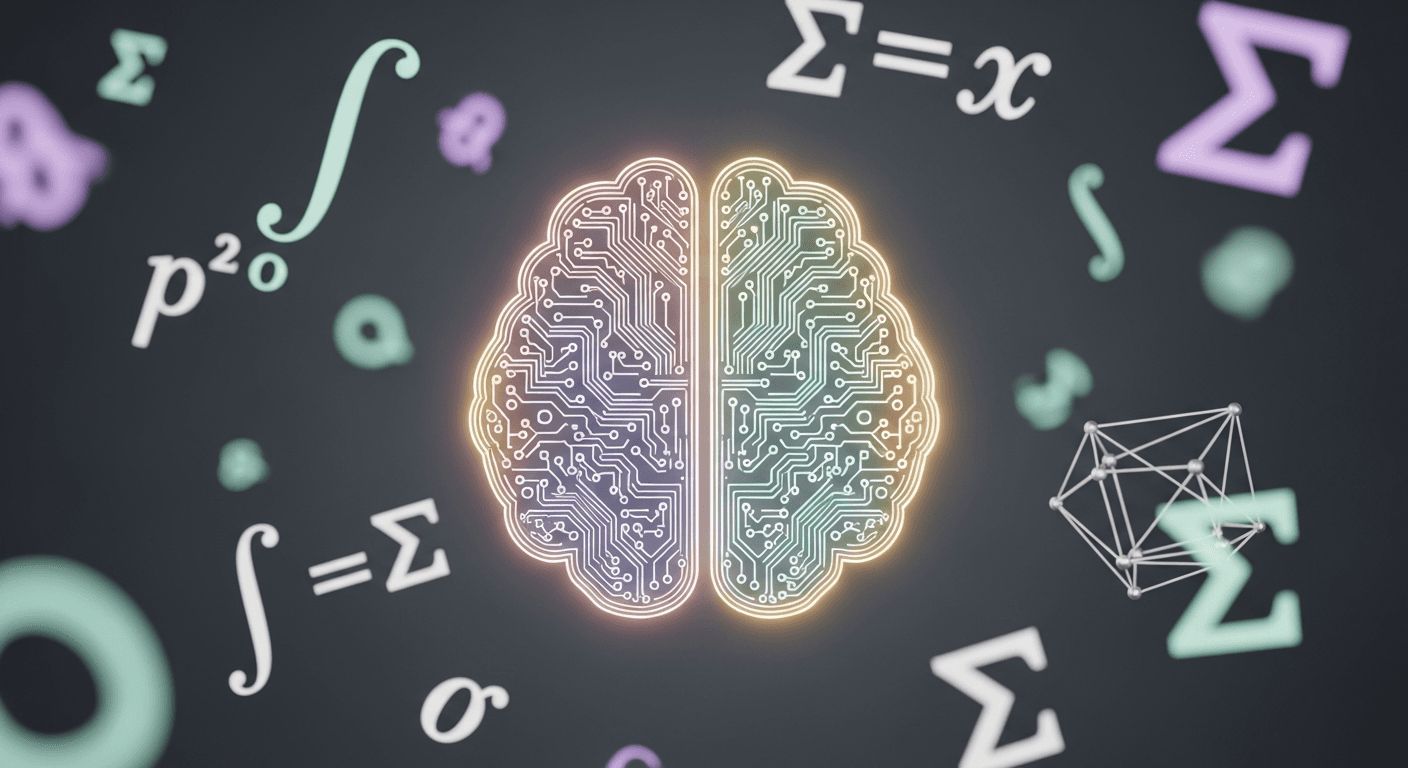
DeepSeek Math V2: The Open-Source Reasoner Achieving Gold-Level IMO Performance
DeepSeek Math V2 claims gold-level IMO performance and near-perfect Putnam results. See how its verifier-generator loop works and how it compares to Gemini.
Read Article